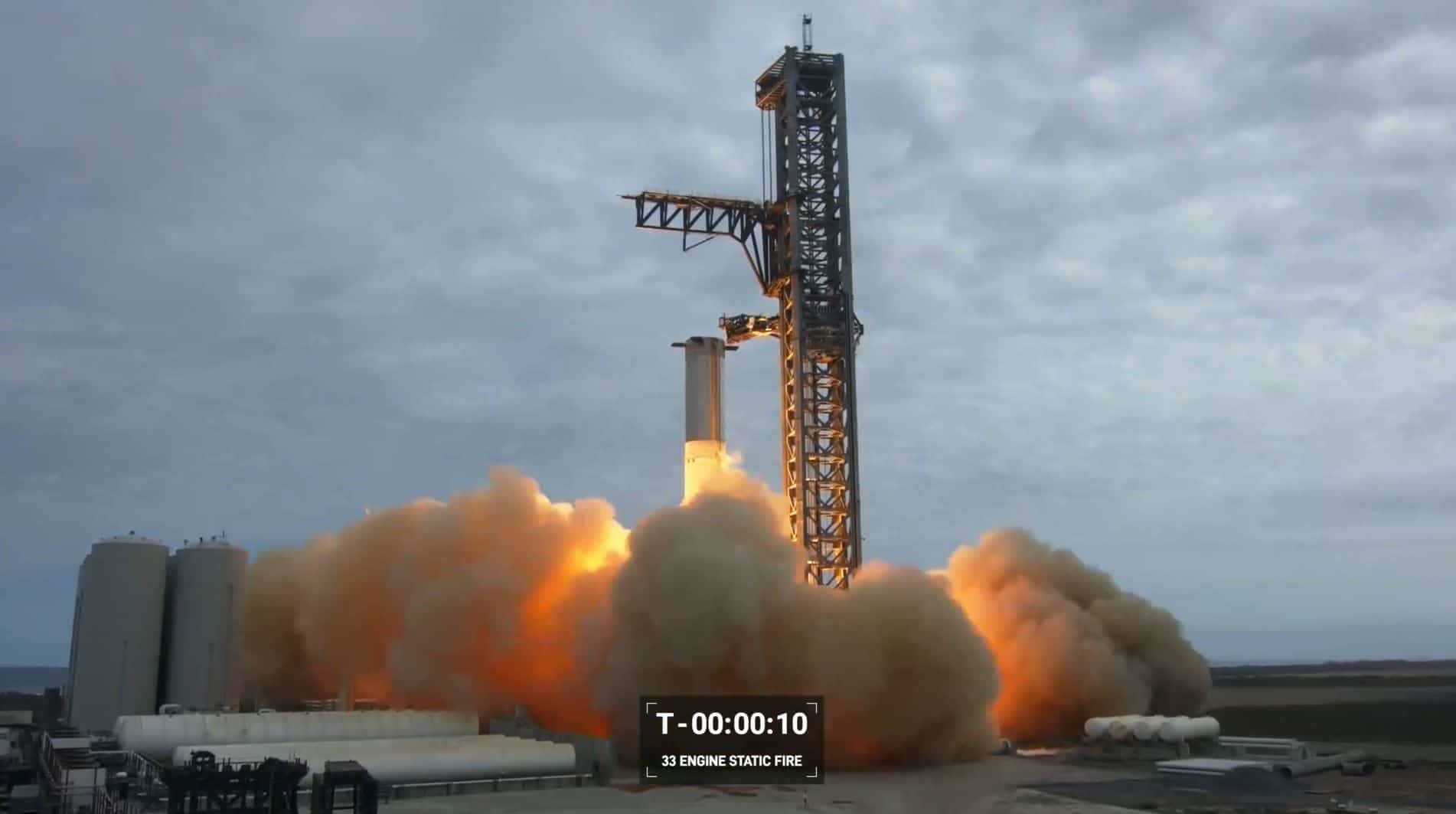Washington, United States– SpaceX conducted a successful test-firing on Thursday of the engines on the most powerful rocket ever built, designed to eventually send astronauts to the Moon and beyond.
The test, called a static fire, of the 33 Raptor engines on the first-stage booster of SpaceX’s Starship took place at the private space company’s base in Texas.
SpaceX founder Elon Musk said one engine was turned off just before the test began and one stopped itself.
“So 31 engines fired overall,” Musk said in a tweet. “But still enough engines to reach orbit!”
SpaceX said the test lasted its “full duration.”
Giant sheets of orange flames erupted from the base of the rocket and clouds of smoke billowed into the air during the test-firing, which lasted several seconds.
The 230-foot (69-meter) Super Heavy booster was anchored to the ground during the test-firing to prevent it from lifting off.
Starship consists of a reusable capsule that would carry crew and cargo and the first-stage booster that was tested on Thursday.
Gwynne Shotwell, the president and chief operating officer of SpaceX, said Wednesday at a conference in Washington that if the test was successful, the first orbital launch may take place within the next month or so.
“It’s really the final ground test that we can do before we light ’em up and go,” Shotwell said.
NASA has picked the Starship capsule to ferry its astronauts to the Moon as part of the Artemis 3 mission, set for 2025 at the earliest.
The US space agency will take astronauts up to lunar orbit itself using its own heavy rocket called the Space Launch System, which has been in development for more than a decade.
Starship is both bigger and more powerful than SLS.
It generates 17 million pounds of thrust, more than double that of the Saturn V rockets used to send Apollo astronauts to the Moon.
SpaceX foresees eventually putting a Starship into orbit, and then refueling it with another Starship so it can continue a journey to Mars or beyond.
Other super heavy rockets under development include Blue Origin’s New Glenn, China’s Long March 9 and Russia’s Yenisei.

